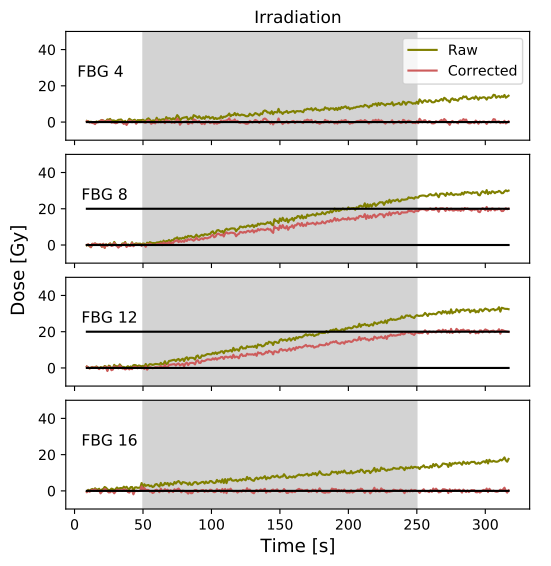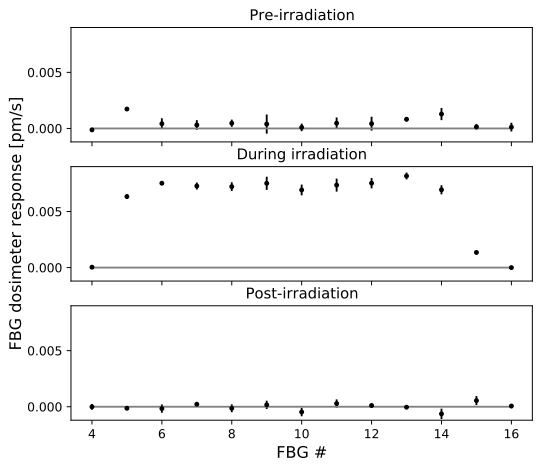Correcting medical range fiber Bragg gratings dosimeter temperature dependencies
Marie-Anne Lebel-Cormier,
Canada
OC-0773
Abstract
Correcting medical range fiber Bragg gratings dosimeter temperature dependencies
Authors: Marie-Anne Lebel-Cormier1,2, Tommy Boilard3,4, Martin Bernier3,5, Luc Beaulieu6,2
1Université Laval , Département de physique, de génie physique et d’optique, et Centre de recherche sur le cancer, Québec, Canada; 2CHU de Québec - Université Laval, Centre Intégré de cancérologie and Axe Oncologie du CRCHU de Québec - Université Laval, Québec , Canada; 3Université Laval , Département de physique, de génie physique et d’optique, Québec , Canada; 4Université Laval , Centre d'optique, photonique et laser (COPL), Québec , Canada; 5Université Laval, Centre d'optique, photonique et laser (COPL), Québec , Canada; 6Université Laval, Département de physique, de génie physique et d’optique, et Centre de recherche sur le cancer, Québec , Canada
Show Affiliations
Hide Affiliations
Purpose or Objective
The interest of fiber Bragg gratings (FBG) dosimeters for radiotherapy dosimetry lies in its i) submillimeter-size, ii) multi-point dose measurements, and iii) customizable spatial resolution. However, they are temperature dependant, which needs to be accounted for. In this work, we present a real-time temperature correction technique that was developed specifically for radiotherapy using a multi-point FBG dosimeter.
Material and Methods
FBGs are written through the coating of a standard 125 microns diameter polyimide-coated silica fiber with the phase-mask technique and femtosecond pulses. Shifts in wavelength induced by a 10x10 cm2 6 MV beam (CLINACiX) are recorded with a commercially available interrogator. The real-time dosimeter consists of twenty 4 mm-long FBG dosimeters, equally distributed over 20 cm embedded in a 5.5×107.5×205 mm3 PMMA plate. A correction factor is calculated using two reference FBGs that are located outside the irradiation field acting as temperature detectors only, requiring that at least two FBGs remain on either side of the irradiation field. FBG #4 and #16 were used as reference FBGs as they had the highest response to temperature from the ten FBGs located outside the 10x10 cm2 field. To obtain the correction factor, it is assumed that the temperature varies linearly between those two reference FBGs since the detector is perpendicular to the ambient heat source (linear accelerator). Hence, we obtain a correction factor for every FBG at every time point. To obtain the signal in terms of dose, we calculate the theoretical response (0.070 pm/Gy) of our dosimeter using the equation presented in [1].
Results
The corrected data obtained for a 20 Gy irradiation are presented in figure 1 with the 51 sec pre-irradiation and 60 sec post-irradiation. For the FBG #4 corrected signal, a mean value of 19.6 ± 0.6 Gy is obtained over the 60 sec post-irradiation corrected signal. For the FBG #8 corrected signal, a mean value of 20.3 ± 0.6 Gy is obtained over the 60 sec post-irradiation corrected signal. The mean slope and standard deviation over three consecutive irradiations are presented in Figure 2 for the 51 sec pre-irradiation, the 200 sec during irradiation and the 60 sec post-irradiation. As expected, the signal obtained before and after the irradiation are approaching zero.
Figure 1: Raw and corrected values obtained using the temperature correction technique. FBG #4 and #16 are the references FBG which are located outside the irradiation field.

Figure 2: FBG dosimeter response measured during pre-irradiation, during irradiation, and during post-irradiation for FBG #4 through FBG #16.
Conclusion
We developed an efficient technique to correct ambient temperature variations in real-time adapted to radiotherapy dose range using a multi-point FBG dosimeter, a first in our field. This opens the door to clinical FBG dosimetry applications.
[1] Lebel-Cormier, M.A. and al. Sensors 2021, 21, 8139.